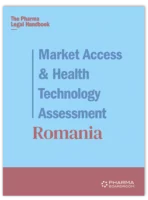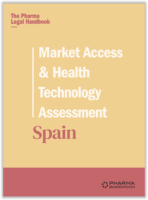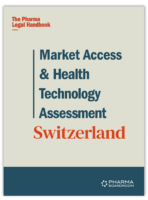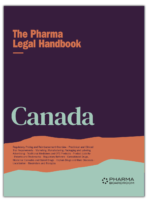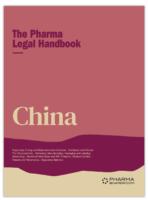Patents & Trademarks
/ Serbia
1. What are the basic requirements to obtain patent and trademark protection?
Under the Patent Act (Official Gazette of the Republic of Serbia, nos. 99/2011, 113/2017 – other act, 95/2018, 66/2019 and 123/2021), in order to obtain patent protection for an invention, the invention must satisfy the basic requirements of novelty, inventive step, and susceptibility of industrial application.
According to the Trademark Act (Official Gazette of the Republic of Serbia, no. 6/2020), trademark protection may be granted to a sign that is capable of distinguishing goods and services of one undertaking from those of other undertakings, and capable of being presented in the Register of Trademarks in a manner that enables the competent authorities and the public to determine the clear and precise subject matter of the protection. A trademark may consist of any signs, including words, drawings, letters, numbers, colours, three-dimensional shapes, the shape of goods or their packaging, combinations of these signs. Sounds can also be protected as trademarks.
2. What agencies or bodies regulate patents and trademarks?
The Intellectual Property Office of the Republic of Serbia carries out tasks related to intellectual property rights, including patents and trademarks. The Intellectual Property Office is responsible, among other things, for examining and granting patents and trademarks and maintaining the relevant intellectual property registers.
3. What products, substances, and processes can be protected by patents or trademarks and what types cannot be protected?
Inventions of products, substances, and processes in any field of technology may be eligible for patent protection if they meet the requirements of novelty, inventive step, and industrial application. The Patent Act explicitly permits patent protection for inventions involving biological material, including isolated biological material, plants, animals, and microbiological processes.
Certain inventions are excluded from patent protection. Inventions whose commercial use conflicts with public order or morality, such as human cloning processes, are ineligible. Methods for treatment by surgery, or diagnostic methods, or therapy practised directly on the human or animal body, cannot be patented. However, products, particularly substances or compositions, intended for use in these methods (that is, medicines and medical devices) are patentable. Patents are not granted for inventions related to plant or animal varieties, or essentially biological processes for producing plants or animals, excluding microbiological processes.
A sign can be registered as a trademark if it is used to distinguish goods and services in trade and may be graphically presented. Any type of a product, substance, or process may be protected by a trademark. The law list nearly 20 grounds on which a mark cannot be registered as a trademark. The absolute grounds for refusal of registration exist in the following situations, among others:
- the mark is devoid of any distinctive character;
- the mark consists exclusively of the shape which results from the nature of the goods themselves, the shape of goods which is necessary to obtain a technical result, or the shape which gives substantial value to the goods;
- the mark consists exclusively of signs or indications which may serve, in trade, to designate the kind, quality, quantity, intended purpose, value, geographical origin, or the time of production of the goods or of providing of the service, or to designate other characteristics of the goods or services;
- the mark may deceive the consumers, as to the nature, quality or geographical origin of the goods or services; or
- the mark which is contrary to public order or morality.
4. How can patents and trademarks be revoked?
Patents and trademarks may be revoked if the requirements for protection were not met at the time of granting. Any individual can initiate the process of revoking a patent by submitting a written request to the Intellectual Property Office. The office then forwards the request to the patent owner for response. This process may involve multiple submissions and, if necessary, a hearing. The procedure concludes with the Intellectual Property Office’s decision to refuse the revocation request, partially or fully revoke the patent, or maintain it with amendments. The procedure for trademark revocation follows a similar process. Depending on the specific grounds for revocation, authorized initiators can be an interested party, the public prosecutor, or the owner or applicant of an earlier trademark. The procedure ends with the Intellectual Property Office’s decision to revoke the trademark in whole or in part, or to refuse the revocation request.
5. Are foreign patents and trademarks recognized and under what circumstances?
Patents and trademarks registered in a foreign country do not enjoy protection in Serbia. To obtain protection in Serbia, patents and trademarks must be registered specifically for the Serbian territory. However, foreign patents and trademarks may benefit from the international treaties of which Serbia is a member: Paris Convention, Patent Cooperation Treaty, European Patent Convention, and the Madrid System for international trademark protection. Based on Paris Convention, applicants who have filed for patent or trademark protection in one member state of the Paris Convention may claim priority when applying for protection of the same invention or trademark in Serbia, provided they file within 12 months for patents or 6 months for trademarks from the date of the first (foreign) application. The Patent Cooperation Treaty, European Patent Convention, and the Madrid System enable simultaneous application for patent or trademark protection in multiple countries, including Serbia, by filing a single application with a competent trademark or patent administration.
6. Are there any non-patent/trademark barriers to competition to protect medicines or devices?
In addition to patents and trademarks, medicines may benefit from regulatory data protection and market exclusivity period.
The regulatory data exclusivity period for a reference medicinal product in Serbia is eight years, while the market exclusivity period is 10 years in line with the current EU regulatory data protection and market exclusivity periods. Regulatory data protection means that an applicant for a marketing authorization in a summary procedure (i.e., a manufacturer of generics, hybrids, or biosimilars) may submit a request to obtain a marketing authorization following the expiry of eight years from the date of issuance of a global marketing authorization in Serbia, the European Union, or a country with the same or similar requirements for issuing marketing authorization. The market exclusivity period provides that a marketing authorization following an application may be issued after 10 years from the issuance of global marketing authorization.
However, manufacturers with a registered seat in Serbia may benefit from an exception to the data and market exclusivity periods for a reference medicinal product, as they are entitled to apply for the marketing authorization after the expiry of six years from the day of issuance of the global marketing authorization for the reference medicinal product. This exception applies to large molecules, while for a biotechnological medicinal product, the period of market exclusivity is still 10 years. The Medicines Act provides in transitional provisions that the regulatory data protection period of eight years and market exclusivity period of 10 years will be applicable to manufacturers with a seat in Serbia from the day of accession of Serbia into the European Union.
Variations in terms of medicinal product strength, pharmaceutical form, methods of administration, packaging or variations and claims for extension of the scope of the marketing authorization will not extend the exclusivity period. However, the period of 10 years may be extended (cumulatively) for one more year, if, during the eight years from the issuance of the marketing authorization for the reference medicinal product, the marketing authorization holder of the reference medicinal product obtains a new marketing authorization for one or more new indications that show a significant improvement in that referent medicinal product therapy, or is a new classification has been determined on the basis of significant pre-clinical tests of clinical trials.
7. Are there restrictions on the types of medicines or devices that can be granted patent and trademark protection?
No, the laws do not differentiate in terms of eligibility for protection based on the type of medicines or devices.
8. Must a patent or trademark license agreement with a foreign licensor be approved or accepted by any government or regulatory body?
No, patent and trademark license agreement are not subject to approval or acceptance by any public authority.












